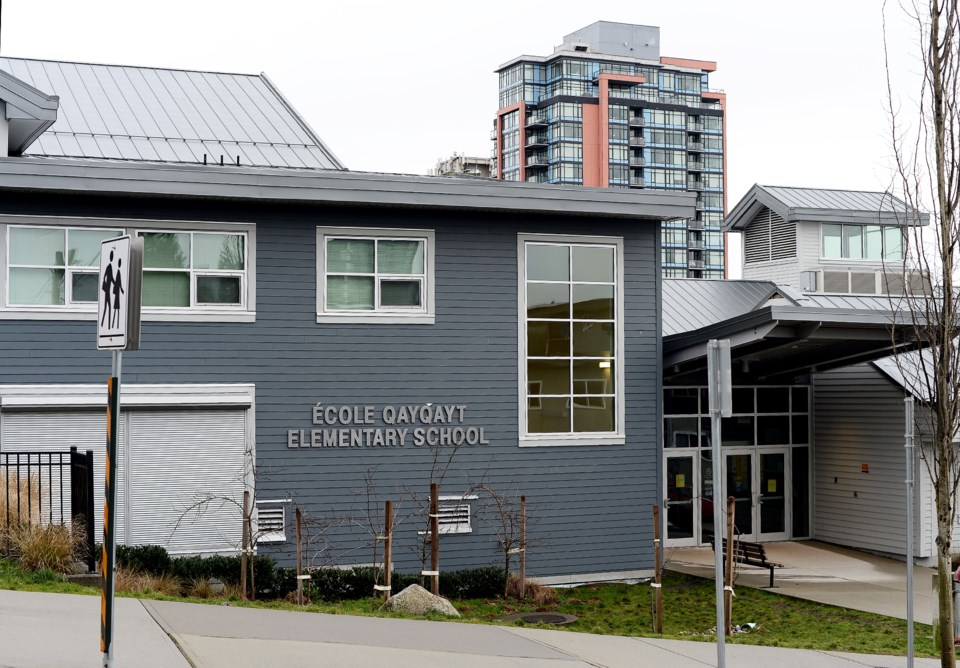When you’re a fast-growing school district in a city with limited land, it’s not easy to stay on top of the need for school space.
For New Westminster, that problem is compounded by the way new school construction is funded in B.C. The province provides money for new schools based on current capacity and not on projected future growth.
School District 40 is now looking for $200 million in its 2022/23 major capital plan submission to the province – a number that has trustees questioning whether there isn’t a better way to fund school construction.
“Now the province is looking at a bill that is extremely high, and all things that need to be done within our district, yet we’re constantly behind the 8-ball,” trustee Mary Lalji said at the final board meeting of the school year June 22. “There has to be a better way than spending money where we could save if we spend it up front and build a little bigger. It makes so much sense.”
The district is expecting nearly 200 more students this coming fall than in the 2020/21 school year, bringing enrolment from 6,581 to an anticipated 6,773.
That number is expected to soar to 8,238 by 2041.
If no new schools were built, the district says it would have a shortfall of 1,048 seats across the board by 2025, 1,340 by 2030 and 1,921 by 2041 – with most of the need for space being in the central area of the city.
FRASER RIVER ZONE A HOTSPOT FOR GROWTH
A school district report notes École Qayqayt and Lord Kelvin elementary schools, which both feed into Fraser River Middle School, are packed full and are on small sites that don’t allow room for further temporary expansion.
Fraser River Middle School, which was just built in 2016, was already over capacity by the 2019/20 school year. Even if the district gets approval for a requested eight-classroom, 200-student expansion, it will already be full upon opening in 2024/25.
And both Fraser River and the city’s largest middle school, Glenbrook, lack the land space for any more expansions or for simply continuing to add portables as a temporary solution.
All of those issues factor in to the district’s big ask to the Ministry of Education, which includes money for the Fraser River Middle School expansion, two new elementary schools and a new middle school. (You can find a full breakdown of that $200-million capital plan submission here.)
One of those new elementary schools would be for the Fraser River zone and could conceivably be ready by 2025/26, if land can be found and the funding comes through.
But even that school’s ability to relieve enrolment pressures will be short-lived, board chair Gurveen Dhaliwal cautioned.
“By the time it’s ready, it’s already going to be full,” she said. “We need to be building for five years down the road, not two years or whatever it might be.”
Dhaliwal pointed out that New Westminster can’t change the way school construction is funded; change has to come from the province.
“It’s unfortunate we don’t build smarter,” she said.
GROWTH IS FAST. CHANGE IS SLOW.
Dhaliwal noted the B.C. School Trustees Association has been advocating at a provincewide level for changes to the way school construction is funded.
Locally, she said, she will be sure to include information about New Westminster’s “crisis situation” in the district’s submission to B.C. Minister of Education Jennifer Whiteside (who’s also New Westminster’s MLA).
Bettina Ketcham, the school district’s secretary-treasurer, said the province does not like to build in anticipation of future growth.
“They don’t like to build schools that generate too much capacity because they have other projects and other programs that typically are competing for dollars,” she said. “To build a school that creates more capacity than is needed is seen to be not the prioritization of dollars. It’s sort of been a longstanding thing.”
But Ketcham said that mindset is slowly shifting.
The province requires school districts to have a long-range plan for facilities, and Ketcham said School District 40 is in the process of updating its own plan.
At the same time, she said, the ministry is shifting its internal processes so it can plan out further than the current five-year capital plans – with an eye on a 10-year vision instead.
“It is something that they’re trying to get a handle on,” she said, noting the province has heard the feedback and knows there is “a level of frustration” from school districts.
“Change is slowly happening, but it’s a bit slow, and it takes a significant amount of work to move a big boulder.”
Follow Julie MacLellan on Twitter @juliemaclellan.
Email Julie, [email protected].



